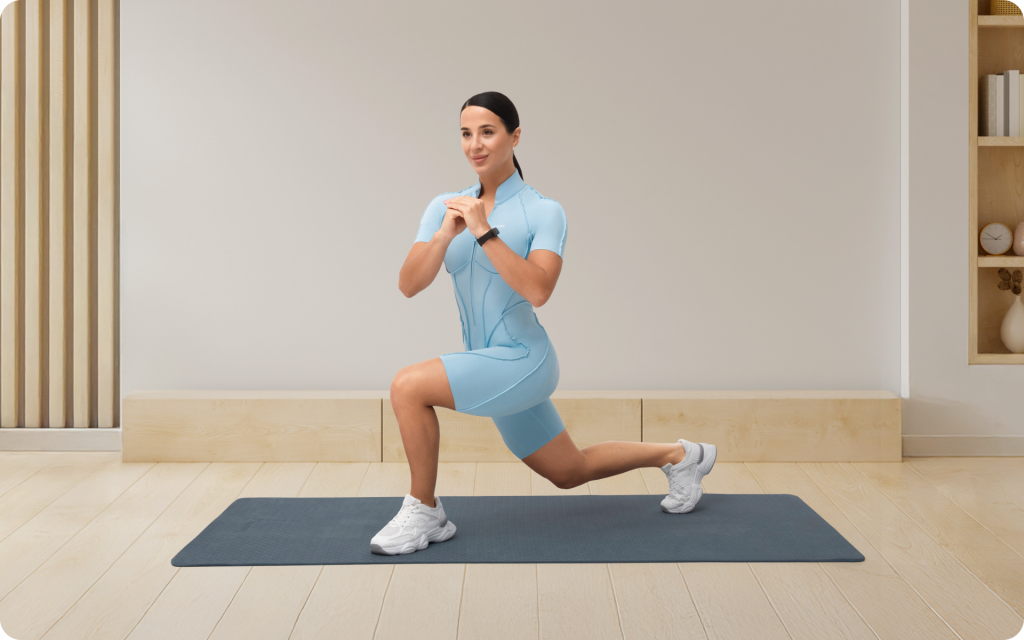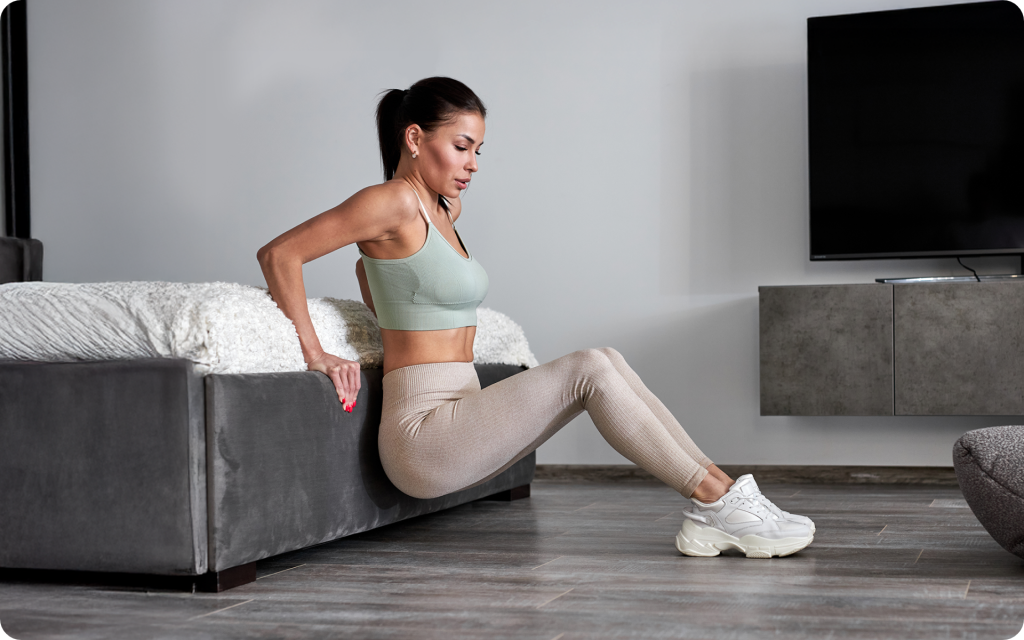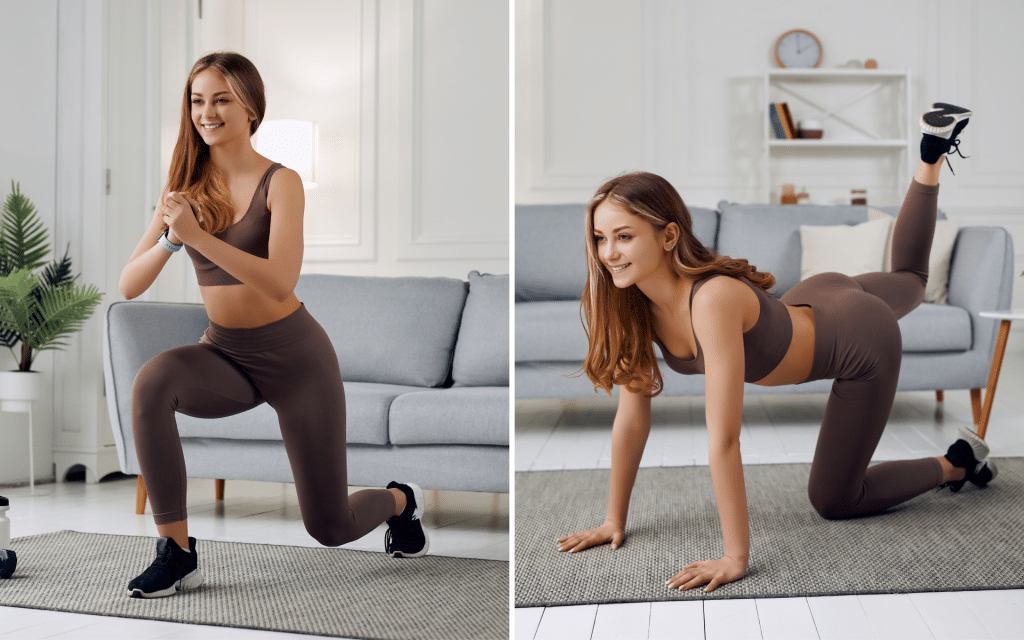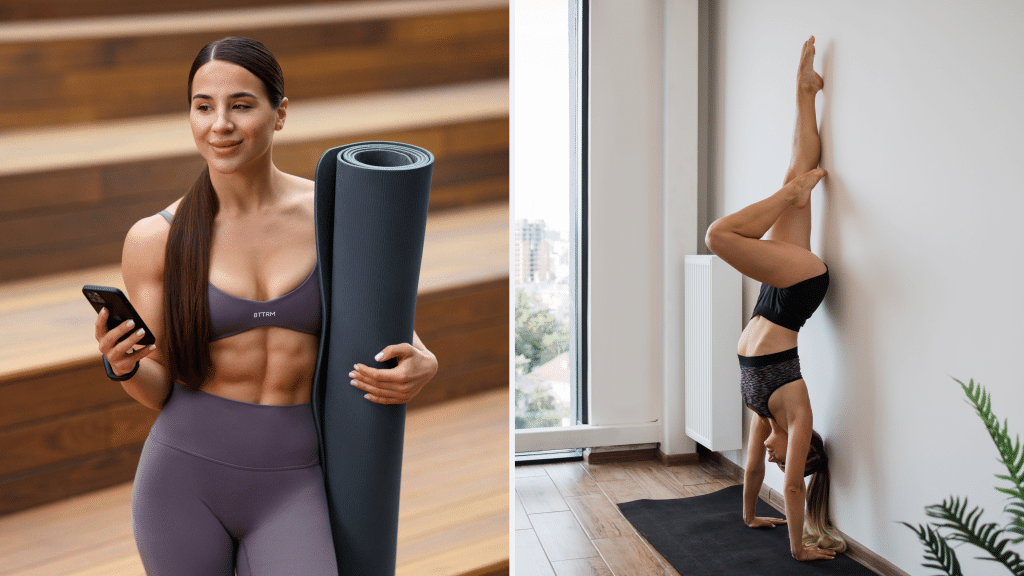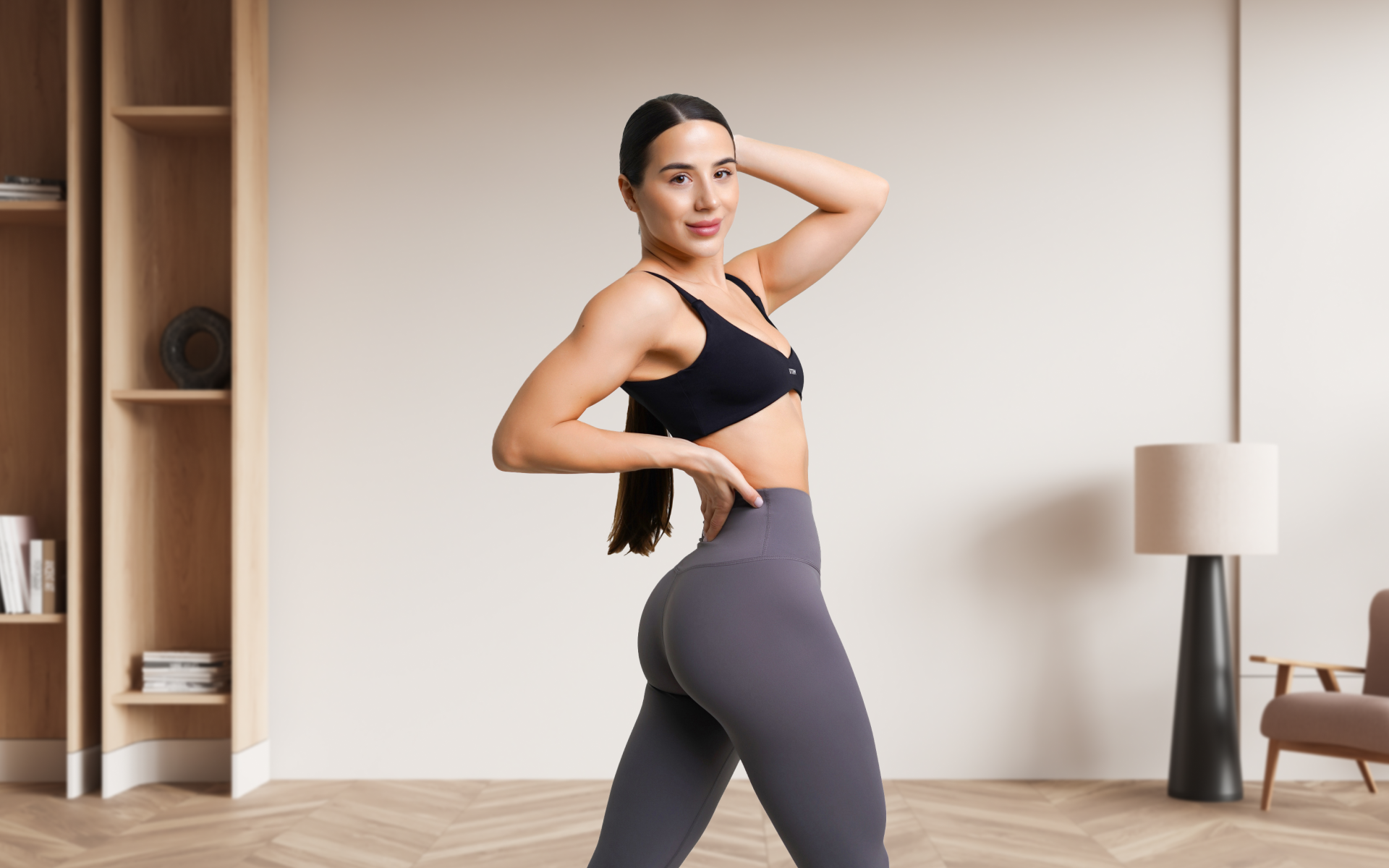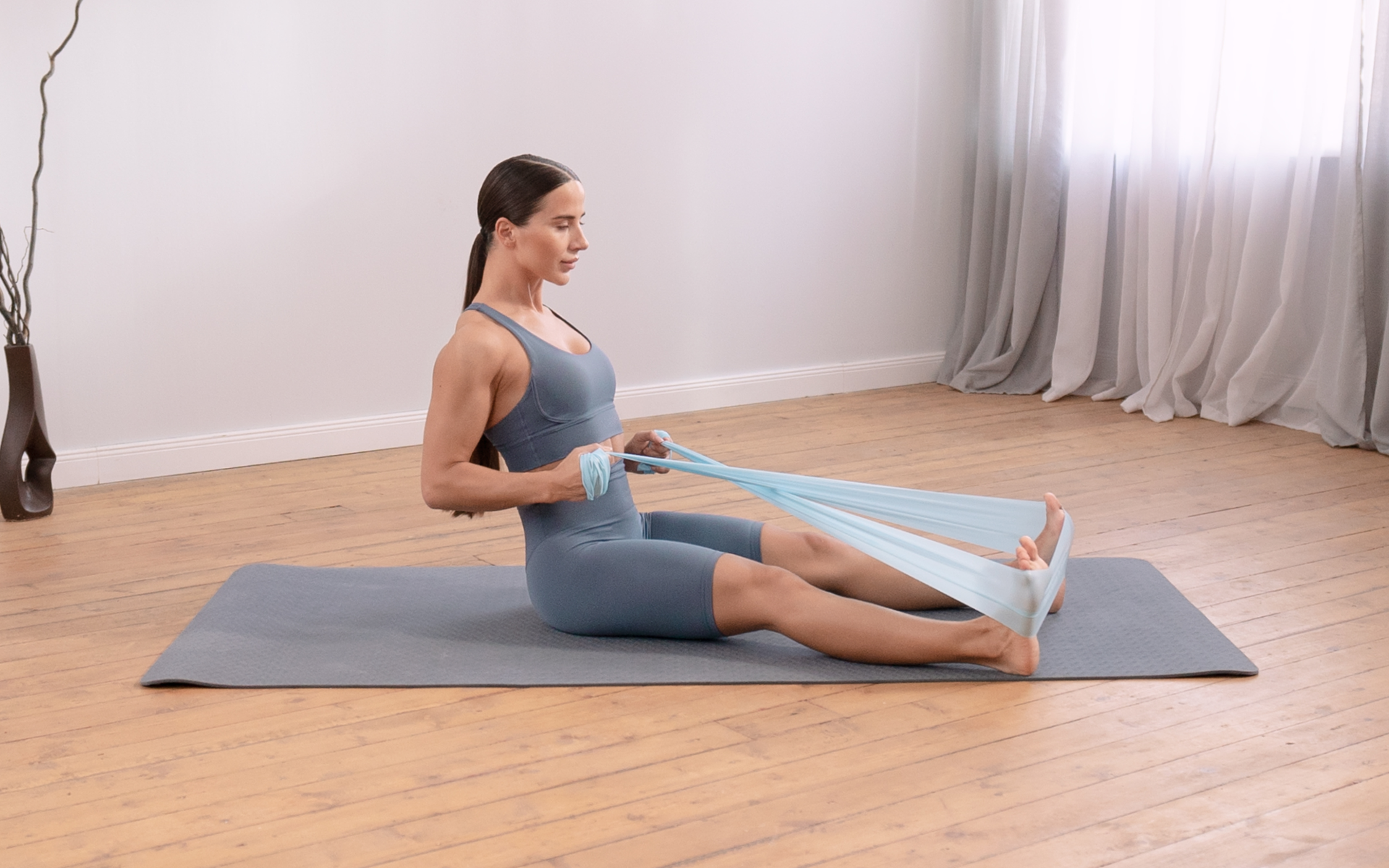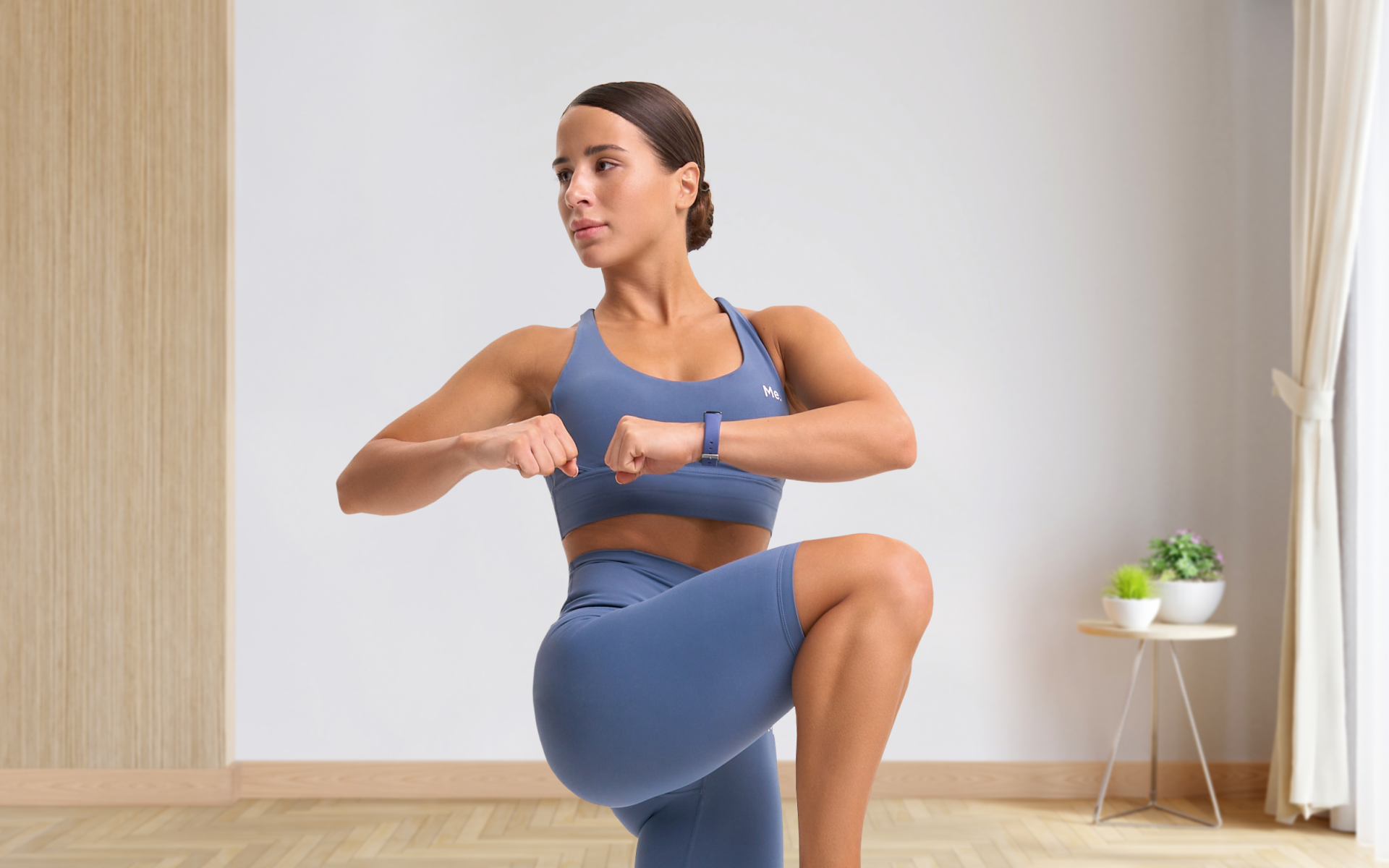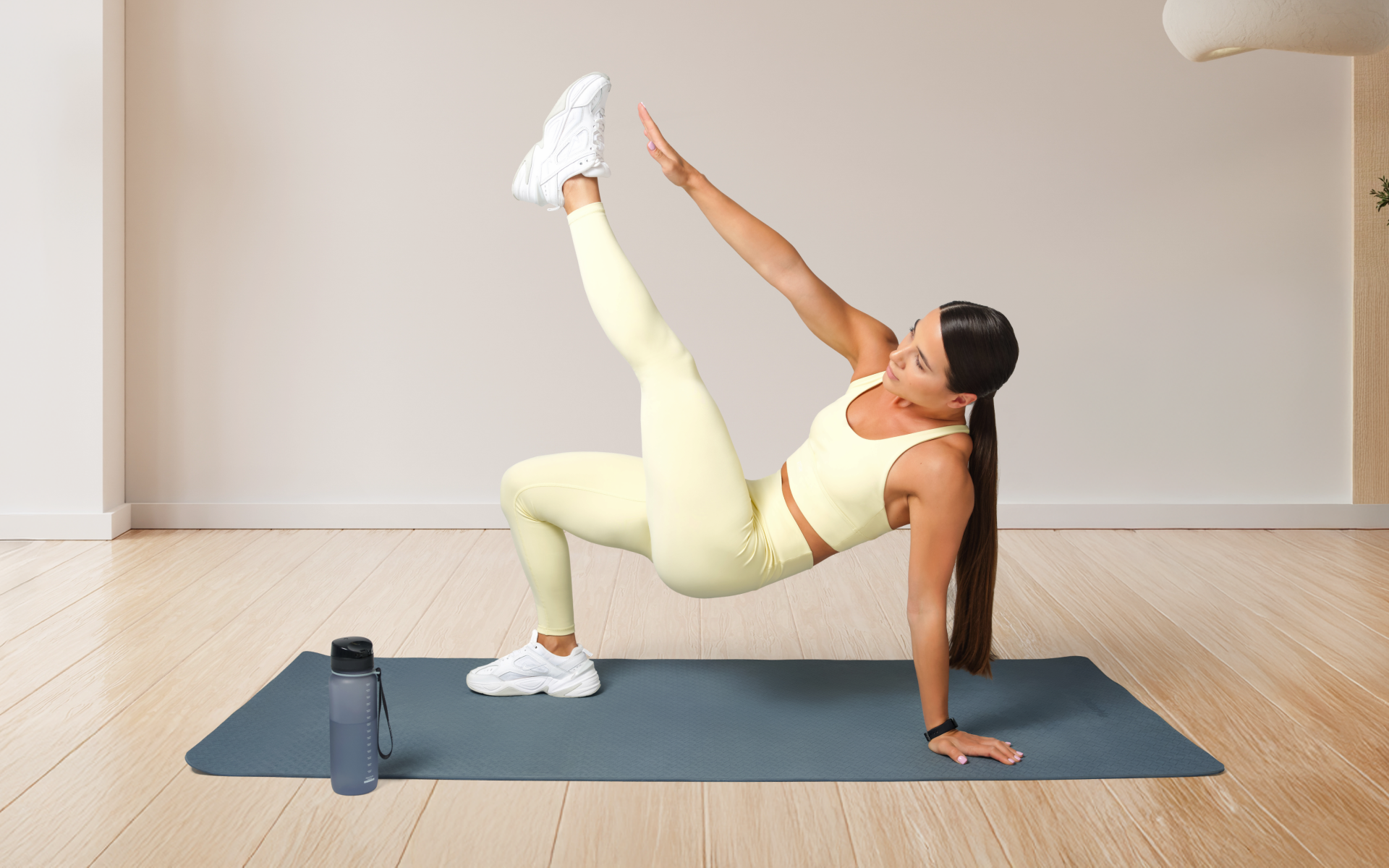Calisthenics has a unique appeal. It emphasizes strength, balance, and flexibility using only your body weight as resistance. Think of movements such as push-ups, pull-ups, and planks. These exercises create a lean, agile, and balanced physique. Many women are drawn to calisthenics as it can be done anywhere and avoids the need for bulky gym equipment.
But here’s where the curiosity kicks in – does calisthenics make women’s shoulders bigger? It’s a common worry, fueled by myths surrounding strength training and muscle gain. The truth isn’t so simple. There’s more at play, including training intensity, genetics, and overall body goals.
Understanding how calisthenics impacts women’s bodies requires a closer, science-backed look, and that’s exactly what we’ll explore here.
But first, let’s talk about shoulder anatomy and why you should train this muscle group.
Shoulder Anatomy
The shoulders are a complex joint that is made up of three bones: the collarbone, scapula, and upper arm bone. These bones work together to allow for a wide range of movement in the arms.
The glenohumeral joint is where the head of the upper arm bone meets the socket of the shoulder blade, allowing for circular movements such as arm circles and rotations. The acromioclavicular joint connects the collarbone to the shoulder blade, allowing for up-and-down movements such as shoulder presses and shrugs. And finally, the sternoclavicular joint connects the collarbone to the breastbone, helping stabilize the shoulder (1).
But it’s not just bones that make up our shoulders – there are also several muscles involved in this complex joint (1). Here are some of the main ones:
- Deltoids: These are responsible for arm abduction (moving your arms away from your body) and give your shoulders their rounded appearance.
- Rotator Cuff Muscles: A group of four muscles that work together to stabilize and rotate the shoulder.
- Trapezius: A large muscle that runs from the base of your skull to your mid-back and helps with shoulder movement and stability.
- Rhomboids: These muscles connect the spine to the shoulder blades and help with posture and scapular (shoulder blade) movements.
Should I Train My Shoulders as a Girl?
Yes, you absolutely should train your shoulders. While many myths surround the idea of women building muscle, strengthening your shoulders carries a host of benefits that improve your physical abilities and enhance your overall health and quality of life. Here’s why focusing on shoulders is worth it:
- It Helps You Build Strength for Everyday Life
Your shoulder muscles, known as the deltoids (grouped into anterior, lateral, and posterior parts), play a major role in almost every upper-body movement (1).
Whether you’re lifting groceries, reaching for something on a high shelf, or carrying your bag, strong shoulders can make these tasks easier by improving your functional strength. This type of strength also reduces fatigue and strain in your arms and upper back.
Calisthenics exercises such as push-ups, pike push-ups, and handstand holds target these muscles without the need for heavy equipment. With consistent training, you’ll notice improved performance in daily tasks and a sense of empowerment in your physical capabilities (2).
- Your Posture Will Improve
Shoulder training doesn’t just build strength, it also impacts your posture. Many women develop rounded shoulders or a slouched back due to long hours at desks or on phones.
Strengthening your shoulders, particularly the posterior (rear) muscles, can counteract this. Properly balanced shoulder muscles help pull your shoulders back and align your spine, which promotes better posture (3, 4).
Calisthenics movements such as reverse planks or scapular push-ups can target these stabilizing muscles, giving you a tall, confident posture that also protects your body from back pain and discomfort.
If you wish to free yourself from all the extra pounds that have been weighing you down for way too long, start using the BetterMe: Health Coaching app and overhaul your entire life!
- You Support Joint Stability and Injury Prevention
Shoulders are among the most mobile joints in the body, which also makes them prone to injury. By training shoulder muscles, including the smaller stabilizing ones like your rotator cuff muscles, you can promote joint stability and reduce your risk of strains or discomfort (5).
For example, exercises such as scapular pull-ups and shoulder taps strengthen the main muscles and those that support your shoulder joints. This creates a protective effect, particularly for active individuals who enjoy sports or other physical activities.
- Your Calisthenics Training Becomes More Effective
Shoulders are essential for performing almost every upper-body movement in calisthenics. From planks to push-ups to dips, they are constantly engaged. Strong shoulders improve your overall technique and allow you to level up your training over time.
You’ll perform exercises with better form and progress to advanced calisthenics moves such as handstands or muscle-ups that require even greater upper-body strength.
By regularly training your shoulders, you’ll build a solid foundation for advancing in this unique style of exercise.
- You Achieve a Balanced and Toned Physique
Contrary to the fear of “bulking up” too much, training your shoulders can actually help you achieve a balanced, toned look.
Women naturally have less testosterone (a hormone key for muscle growth) than men, which makes it harder to develop overly large muscles. What calisthenics can do is give your shoulders definition and proportional strength, creating a sleek and athletic appearance (2).
Exercises such as lateral planks or shoulder circles can help give your upper body a beautiful, sculpted look without adding unwanted bulk.
- It Boosts Your Confidence
Feeling strong isn’t just about physical benefits, it can also boost your confidence. Training shoulders, especially through calisthenics where progress is so tangible, makes you realize how capable your body is.
Whether you’re mastering your first set of perfect push-ups or advancing to challenging pike holds, every milestone is a reminder of your strength, resilience, and discipline (6).
- Your Metabolism Gets a Boost
Building muscle, even in smaller areas such as the shoulders, can stimulate your metabolism. Muscle tissue requires energy to maintain, which means you burn more calories at rest when you have more lean muscle mass (7).
Shoulder training contributes to this, making it a small but impactful way to support your overall fitness and metabolic health.
Read more: Women’s Calisthenics: The Strength Era Has Arrived
Can You Grow Big Shoulders with Calisthenics?
The short answer? Yes, you can grow your shoulders with calisthenics, but there are important nuances you must consider, especially for women. To understand the potential, we need to look at how calisthenics influences hypertrophy (a term that refers to muscle growth) and its limitations compared to other forms of resistance training.
How Calisthenics Can Trigger Hypertrophy
Calisthenics primarily uses your body weight as resistance. Movements such as pike push-ups, handstand push-ups, and dips can stimulate your shoulder muscles by applying tension.
This tension creates small tears in the muscle fibers, which repair during recovery, leading to growth and greater strength. This process is the foundation of hypertrophy – placing enough load on muscles to encourage adaptation (8).
With progressive overload (gradually increasing the difficulty of exercises), calisthenics can effectively build muscle size (9). For example, you may start with wall-assisted handstand push-ups and eventually progress to freestanding ones. Over time, this forces your shoulders to adapt, grow stronger, and potentially increase in size.
Limitations of Calisthenics for Shoulder Growth
While calisthenics can promote hypertrophy, its muscle-building potential has limits. With traditional weight training, you can precisely control the load by adding heavier dumbbells or weights. On the other hand, calisthenics relies on body mechanics to increase difficulty, such as changing angles, adding leverage, or performing harder variations of movement.
This makes it more difficult to provide a consistently high level of tension to support maximum growth. Advanced calisthenics exercises require a great deal of core strength and balance, which may limit how much focus is placed directly on the shoulders. Over time, this could hinder the degree of hypertrophy you achieve compared to that which you get with targeted weight training.
Muscle Growth for Women
It’s also essential to address a common concern – women’s shoulders getting “too big”. While calisthenics can tone and add definition, dramatic growth is unlikely. Women naturally produce far less testosterone than men, a hormone that is essential for significant muscle building. This hormonal difference means it’s much harder for women to develop large, bulky muscles (10).
Instead, calisthenics can help most women achieve a lean, athletic look with well-defined shoulders. You’ll build strength and shape without the disproportionate or oversized appearance of some fear.
What Calisthenics Can Achieve
For women, calisthenics is an excellent way to enhance shoulder endurance, strength, and aesthetics.
You can expect toned shoulders with some degree of increased size – especially at the start of training – if you’re consistent and use progressive overload. However, the muscle size achieved with calisthenics alone will likely plateau unless combined with heavier resistance training or other methods.
That being said, calisthenics can still deliver an impressive sense of raw strength and stability, together with the satisfaction of mastering bodyweight feats such as handstands or planches. These valuable gains make it an appealing choice for functional fitness and upper-body conditioning.
How Can a Female Do Calisthenics Without Getting Wider Shoulders?
If you’re a woman who loves calisthenics but wants to avoid significantly increasing shoulder width, you’re not alone. Many women worry about this aspect of bodyweight training, but with the right approach, it’s possible to engage in calisthenics while keeping your physique balanced. Here’s how you can strategically train to meet your goals.
- Focus on Exercise Selection
The exercises you choose play a big role in shaping your shoulders. To limit width increase, you should avoid movements that overly target the lateral (side) deltoid muscles, as these contribute most to the appearance of wider shoulders. Exercises such as handstand push-ups or lateral planks focus heavily on shoulder engagement and may not align with your goals.
Instead, prioritize functional, full-body movements that incorporate your shoulders without overly isolating them. For example, push-ups engage your shoulders and also your chest, triceps, and core, which creates a more balanced workout without overemphasizing shoulder growth.
- Limit Training Volume and Intensity for Shoulders
Volume refers to the number of sets and reps you perform, while intensity measures how close you are to fatigue. Both of these factors influence muscle growth. If you perform too many high-intensity shoulder exercises (such as pike push-ups or dips), you may inadvertently promote hypertrophy.
To moderate shoulder development, you need to reduce the number of sets for shoulder-focused movements and keep the intensity lower. For example, perform shoulder exercises once or twice a week rather than multiple times. Focus on maintaining strength and endurance rather than pushing for maximum growth.
- Balance Shoulders with Other Muscle Groups
A well-balanced calisthenics routine can help you achieve a symmetrical and proportional physique. To offset too much focus on your shoulders, make sure your program includes plenty of exercises for other areas, such as your back, glutes, and legs. These muscles all contribute to a strong, athletic look without overdeveloping a single area.
For example, incorporate pull-ups or bodyweight rows to strengthen your back and upper body as a whole. Lower-body exercises such as step-ups and bodyweight squats ensure your training stays comprehensive. Diversifying your routine also helps improve overall functionality and prevents overuse of any single muscle group.
- Use Control and Form Rather than Extreme Progressions
One of the great things about calisthenics is the ability to advance to harder movements by mastering control and form. Instead of progressing to challenging shoulder-dominant exercises (such as handstands), focus on form refinement and core integration.
Exercises such as plank shoulder taps or scapular push-ups keep your shoulders involved but shift the emphasis to stabilization rather than size-building strength.
How to Get Wider Shoulders for a Female
If you’re looking to build wider, more defined shoulders, calisthenics can be a fantastic approach. The key is to focus on effective exercises, proper techniques, and a training plan that’s designed for gradual, sustainable progress. Here’s how you can achieve strong, proportional shoulders without the fear of bulking up.
Focus on Calisthenics Movements that Target Your Shoulders
Calisthenics offers a variety of exercises that engage your shoulders from different angles, helping build strength and shape. Some key moves to include in your routine are:
- Pike Push-Ups: These target the anterior (front) and lateral (side) parts of your shoulders. Adjust the difficulty by raising your feet onto a higher surface as you grow stronger.
- Handstand Push-Ups (with or without wall support): A staple for building shoulder endurance and size. Start with wall-assisted holds and gradually work toward the pushing motion.
- Lateral Planks with Shoulder Taps: A great option for developing lateral strength and stability.
- Scapular Push-Ups and Push-Up Variations: These help engage stabilizing muscles in your shoulders, which improves your overall strength.
- Shoulder Circles or Wall Angels to promote mobility and posture while gently targeting your shoulder muscles.
These exercises use your body weight as resistance, so they focus on functional strength and sculpting.
Reasons why BetterMe is a safe bet: a wide range of calorie-blasting workouts, finger-licking recipes, 24/7 support, challenges that’ll keep you on your best game, and that just scratches the surface! Start using our app and watch the magic happen.
Use Progressive Overload
To make your shoulders appear wider, growth happens through progressive overload, which means gradually increasing the challenge in your exercises (9). This could involve:
- Increasing the number of reps and sets over time.
- Changing angles in exercises, such as moving from standard pike push-ups to elevated push-ups.
- Adding pauses or slowing down your reps to increase time under tension (the amount of time your muscles are worked during a set).
Progressive overload ensures your shoulders adapt and grow instead of plateauing.
Prioritize Proper Form
Good form is essential for maximizing results and preventing injury (11). For example, during pike push-ups or handstands, keep your core engaged and avoid over-arching your back. Proper alignment ensures you’re effectively targeting your shoulder muscles and not straining other areas such as your neck or lower back.
If you’re unsure about your form, using a mirror or recording yourself can help you spot and correct mistakes. You may also consider seeking guidance from a trainer or coach when you start out.
Balance Your Shoulder Training
To achieve a proportional look, target all three parts of the shoulder muscle (the anterior, lateral, and posterior deltoids).
While front movements such as push-ups focus primarily on the anterior portion, you’ll need to intentionally include exercises that work the lateral and posterior areas for a balanced, wider appearance. Exercises such as lateral planks and reverse planks are excellent for this purpose.
These Calisthenics Shoulder Exercises build strength, boost flexibility, and can be done anytime, anywhere – no equipment needed.
Address Nutrition and Recovery
Muscles grow during recovery – not during the workout itself. Ensure you get enough protein, which plays a key role in repairing and building muscle tissue (12).
You should include a mix of protein sources such as eggs, fish, beans, or tofu in your meals. Staying hydrated and ensuring restful sleep also supports recovery and performance.
Don’t forget rest days. Overtraining can lead to fatigue, stalled progress, or even injury. You should give your muscles at least 48 hours to recover before targeting them again (13).
Read more: Calisthenics Supersets: Effective Workouts to Build Strength and Endurance
Do Push-Ups Increase Shoulder Size?
Push-ups can contribute to shoulder development, but their impact on size is limited. This exercise primarily targets the chest (pectorals), triceps, and shoulders, especially the anterior (front) deltoids. It applies consistent tension to these muscles, which can encourage some growth, particularly for beginners.
However, push-ups alone don’t provide the high level of resistance that is needed for significant hypertrophy (muscle growth) over time. For substantial shoulder size increases, progressive overload – gradually increasing resistance or intensity – is essential. With push-ups, this may be harder to achieve than with exercises such as weighted training or advanced calisthenics variations. As we previously mentioned, push-ups primarily target the front deltoid and in order to increase shoulder size, you’ll need to train all 3 heads of the shoulder equally.
Our previous blog on Skinny Shoulders shares expert tips and exercises to help you build size, strength, and confidence.
Not typically. Calisthenics focuses on bodyweight movements that build strength and tone. While it can increase muscle size to some extent, particularly for beginners, its resistance levels generally aren’t high enough for significant bulk. For women, hormonal differences further limit the likelihood of becoming overly muscular. Absolutely! Upper-body training is essential for overall strength, posture, and injury prevention. It helps balance the body, improves daily movement capabilities, and builds confidence. Calisthenics exercises such as push-ups and rows can tone without excessive bulk, particularly when paired with balanced training. Broad shoulders are often associated with the inverted triangle body type, where the upper body is wider than the hips. However, shoulder width also depends on genetics, bone structure, and muscle development, which makes it unique for each individual. Yes, an hourglass figure can have broad shoulders as long as your hips are proportionately wide. Body types are defined by balance and proportions rather than specific measurements, so broad shoulders can still fit into the hourglass category if the body remains symmetrical.Frequently Asked Questions
Will calisthenics bulk you up?
Should girls hit the upper body?
What female body type has broad shoulders?
Can an hourglass figure have broad shoulders?
The Bottom Line
Can calisthenics grow big shoulders? The answer depends on your definition of “big”. It’s an effective way to sculpt, strengthen, and shape your shoulders, but its limitations in resistance may cap size growth compared to traditional weightlifting. For women, calisthenics offers both empowerment and physical transformation without the risk of bulking up excessively. By tailoring your approach and understanding your body’s potential, you can use calisthenics to create shoulders that are strong, functional, and beautifully balanced.
DISCLAIMER:
This article is intended for general informational purposes only and does not serve to address individual circumstances. It is not a substitute for professional advice or help and should not be relied on for making any kind of decision-making. Any action taken as a direct or indirect result of the information in this article is entirely at your own risk and is your sole responsibility.
BetterMe, its content staff, and its medical advisors accept no responsibility for inaccuracies, errors, misstatements, inconsistencies, or omissions and specifically disclaim any liability, loss or risk, personal, professional or otherwise, which may be incurred as a consequence, directly or indirectly, of the use and/or application of any content.
You should always seek the advice of your physician or other qualified health provider with any questions you may have regarding a medical condition or your specific situation. Never disregard professional medical advice or delay seeking it because of BetterMe content. If you suspect or think you may have a medical emergency, call your doctor.
SOURCES:
- Anatomy, Shoulder and Upper Limb, Shoulder (2023, nih.gov)
- The Effect of Breaking Up Sedentary Time with Calisthenics on Neuromuscular Function: A Preliminary Study (2022, mdpi.com)
- Impact of spinal alignment and back muscle strength on shoulder range of motion in middle-aged and elderly people in a prospective cohort study (2014, pringer.com)
- The effects of a calisthenics training intervention on posture, strength and body composition (2017, journals.sagepub.com)
- Stabilizing characteristics of rotator cuff muscles: a systematic review (2014, tandfonline.com)
- Physical activity and self-esteem: testing direct and indirect relationships associated with psychological and physical mechanisms (2016, dovepress.com)
- Increasing muscle mass to improve metabolism (2013, nih.gov)
- Effect of Progressive Calisthenic Push-up Training on Muscle Strength and Thickness (2018, journals.lww.com)
- Progressive overload without progressing load? The effects of load or repetition progression on muscular adaptations (2022, nih.gov)
- Circulating Testosterone as the Hormonal Basis of Sex Differences in Athletic Performance (2018, academic.oup.com)
- ~Benefits of Proper Form and Technique during~Resistance Training~ (n.d.,walkitscience.org)
- Nutrition and Muscle Recovery (2021, mdpi.com)
- Diagnosis and prevention of overtraining syndrome: an opinion on education strategies (2016, nih.gov)

